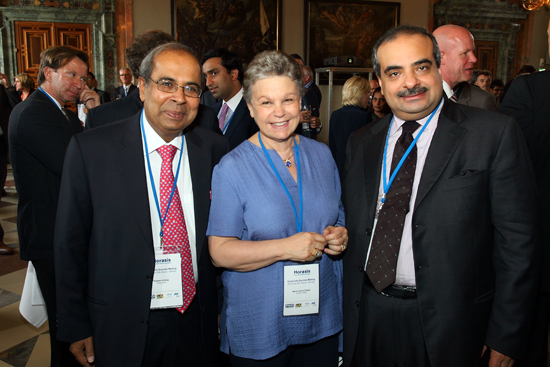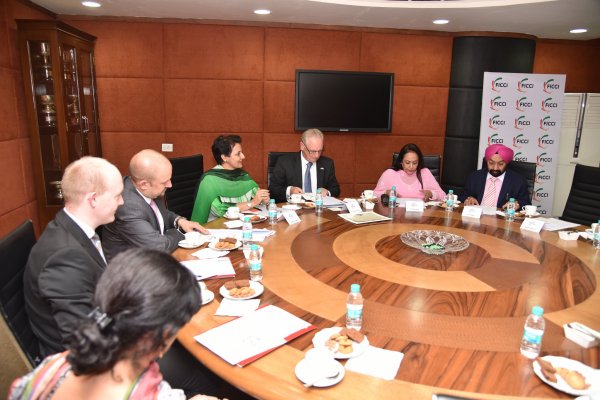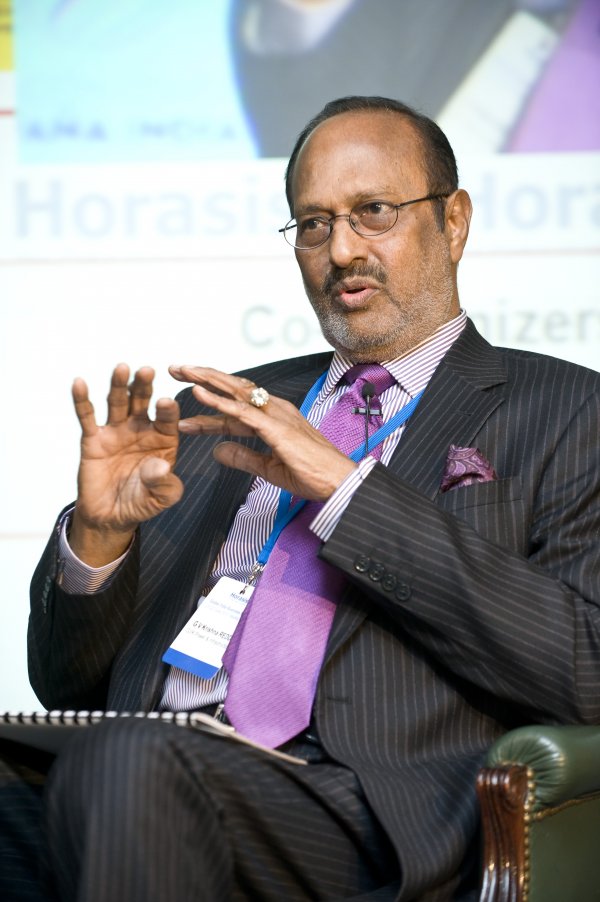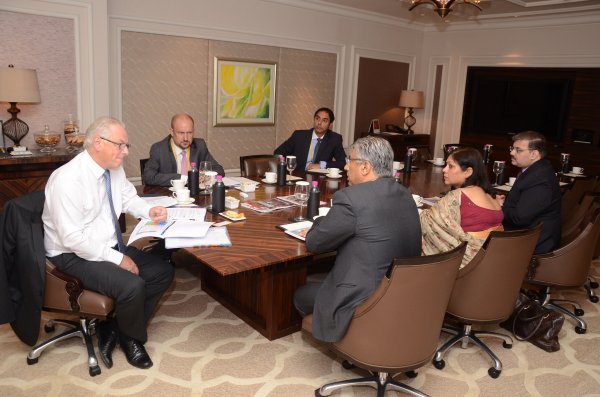Business Culture: Business Meetings
To Indian businesspeople, relationship building is a crucial first step in creating a harmonious and productive partnership. A foreign businessperson should expect multiple preliminary meetings of a more personal nature before any business matters will be discussed. Indian businesspeople usually approach meetings with a more relaxed attitude than Westerners are probably used to, but do not mistake this for distractedness, as Indians are well known as competitive negotiators who will examine and take note of every minute aspect of a deal.
India has achieved considerable advances in the past three decades, moving from a developing economy to becoming a global leader in technology, pharmaceuticals, and other sectors, so businesspeople tend to be proud of their country’s progress. Correspondingly, women and members of all social classes are better represented in business than previously.
Preparation
You may need to have preliminary meetings with third parties before contacting your potential business counterpart. Before your trip, be sure to meet with a merchant banker or a representative of an Indian bank, such as Industrial Credit and Investment Corporation of India (ICICI) or the Industrial Development Bank of India. Also, it’s important to meet with a lawyer who specializes in joint ventures and collaboration, to ensure that you have a full understanding of the legal aspects of your venture before you begin. It may also be necessary to meet with a government official, either at the state or federal level. Meeting with the commercial or economic staff of your local Indian embassy or consulate may also be helpful.
Networking is key to doing business in India. Your counterparts will probably be forthcoming with recommendations of family members or friends, but you should be wary of developing contacts through these channels. Instead, be in touch with a chamber of commerce, your country’s embassy, or an Indian bank that can make recommendations and help you connect with businesspeople in the relevant sectors. These institutions can also help you contact an intermediary who can introduce you to your potential business partner. Such an intermediary can significantly ease the initial stages of the business relationship.
Send information ahead about the team members who will be meeting with your Indian counterparts. The Indian company will put together a team that is comparable to the one you bring. It may also be a good idea to send an agenda prior to the meeting, though don’t expect your counterparts to follow it to the letter.
There are 22 official languages in India and well over a thousand recognized dialects. Different languages are spoken in different regions, but English is widely spoken as well, and is the unifying language of the country and the government, holding official status. Be aware that for most Indians, English is a second or third language, and pronunciation can vary significantly from familiar non-Indian English, making it potentially difficult for speakers from other countries to understand. Before your meeting, inquire whether you should bring an interpreter.
Scheduling
Though it is common for meetings to be held on short-term notice, it is best to schedule appointments in advance. There is a good deal of variation among businesses and it will be hard to tell when a drop-in call is acceptable and when it is not. That being said, be prepared for last-minute cancellations or requests to reschedule. When meeting at a government agency, expect that the meeting may start up to 30 minutes late. Nevertheless, try to be punctual. Call ahead if you will be late, but don’t agonize over your tardiness; your counterpart will probably be understanding.
Leave time in your schedule for last-minute meetings. With the various contacts and representatives of different organizations you will have to meet, you are bound to have some unexpected scheduling needs.
Business hours vary depending on the region and type of business. Central government offices and Western-style businesses are usually open from 9:30a.m. to 5:30p.m., with a one-hour lunch break. Banks are open 10a.m. to 2p.m.
India is a multi-cultural and multi-religious society. The dates of national and religious holidays can change from year to year, as both the Hindu and Islamic calendars follow a lunar cycle. A list of national holidays can be found at www.worldtravelguide.net.
Business Attire
Men wear business suits and ties. In particularly hot weather, some executives forgo the jacket and tie and wear a dress shirt instead. Younger executives tend to prefer the Western-style suit no matter the weather, and as air conditioning is the norm in corporate offices, this should present little discomfort. Businesswomen wear suit outfits or a long, loose-fitting shirt over trousers made of silk or cotton. Whatever the style, women should dress modestly, covering the knees, shoulders, and most of the arms.
Meeting Protocol
Entering the Meeting Room: Hierarchy
Traditional businesses often have a large number of employees, ranging from senior executives with a high social status down to usually illiterate messenger boys from lower castes. These businesses follow strict hierarchies, and it can be difficult to move up from a lower position. More modern businesses have a closer resemblance to companies based in the West.
Indian culture has a strong reverence for age, and senior executives will often be correspondingly older. Choosing a leader for your own negotiating team who is older may gain you added respect and make it more likely that your Indian counterpart will take you seriously.
Introductions
There is no formal protocol for an initial meeting; key members of a company, including CEOs and CFOs, may meet with you from the outset. Though there are many types of formal greetings in India, the correct greeting for a business meeting is a handshake. At the end of a meeting, or when saying thank you, both hands may be used. When meeting a woman, wait for her to extend her hand first.
Forms of Address
Names in India can be perplexing to people from other cultures. There is a move toward the Western practice of listing first name and then last name. However, you may also come across Indians who follow traditional customs, whereby there is no set practice for either the order of names or for surnames themselves. In the business world, people usually indicate name order on their business cards by printing their surname in all capitals.
It is customary to add the suffix ji (pronounced "gee") to a person’s name when you address him or her. The suffix sahab (pronounced "saab") may also be added, but foreigners should avoid doing it. You may be addressed with either of these suffixes. The safest bet, in the business world, is to address your counterparts with the English Mr., Miss, or Mrs. together with their last name, if they give one, or with their first name.
In the corporate world, many people have adopted the Western practice of calling each other by their first names. However, this is usually reserved for close acquaintances or people of equal seniority, so it is best to follow your counterparts’ lead before assuming a first-name basis.
Business Cards
Business cards are slowly entering Indian business culture. They are more commonly exchanged in businesses than in government settings, unless you are dealing with a government-owned company. Senior executives may expect you to offer your card, but will not offer one in exchange, the idea being that since you initiated contact with them, you certainly know how to get in touch.
You do not need to translate your card into an Indian language. Offer and accept cards using your right hand. When receiving a card, take a minute to show respect to your counterpart by studying the card before putting it away.
Body Language
Indians often use a good deal of hand gestures and body language when conversing, including (especially in South India) a range of head nods that can appear ambiguous to non-Indians: for example, a loose side-to-side shake generally means "yes," though it may be conditional, with subtle inflections ranging from reluctant acceptance to enthusiastic affirmation.
Avoid using your left hand to pass things to others; it is considered unclean by both Muslims and Hindus. Although eye contact is often used between peers, it is a sign of respect in India to look away from someone’s face. Other than a friendly handshake, avoid physical contact. In traditional Indian culture, there are prohibitions against physical contact (including handshakes) between non-family members of different sexes and between members of different castes; however, modern businesspeople tend to be more relaxed about such matters.
Meeting Starters: Small Talk versus "Getting Down to Business"
Indian business culture is relationship-oriented. Small talk almost always precedes business discussion at both an initial meeting and at subsequent meetings. Indians are interested in long-term relationships, and it is important to show a willingness to develop a friendly, trust-based partnership.
Asking about friends and family is always a good idea. Many businesses are family-owned, and sharing details about one’s own family is a way of connecting with your business counterparts.
This relationship-building period before a meeting can be lengthy. Don’t rush your counterparts. It is important to show that you are interested in developing a relationship and willing to take the time necessary to do so. Wait for your Indian counterpart to bring up the business at hand.
Conducting the Meeting
Meetings usually follow a strict agenda. Before you arrive, your Indian counterparts will have done their research to learn as much as they can about your company. Be sure to come well prepared, as Indians can be tough businesspeople, and it is important to have a clear picture of what you want to accomplish during your meeting.
Provide your own agenda, but do not be too rigid about keeping to your plan. Allow your Indian counterparts to call most of the shots when it comes to topics for discussion. Be prepared for them to discuss each issue in detail before moving on to the next.
Provide clear, attractive visuals to supplement your presentation. Indian businesspeople are usually familiar with media presentations, and a good one can help you negotiate a deal.
Decision Making
Decision making varies depending on the firm. Traditional companies usually follow strict hierarchies. Often, in family-run businesses, the head of the family makes all the decisions without consulting anyone else. Companies that follow Western trends, generally large corporations, favor a less rigid structure in which middle managers and employees at junior levels share the responsibility of making decisions.
Do your research. It is important to know whom you are dealing with before you begin negotiations. In a traditional business, it is crucial to meet with the right people and treat them with the utmost respect and deference. You may have more leeway when dealing with counterparts from Western-style companies.
Gifts and Splitting the Bill
Modest gifts or invitations to share a meal can help solidify the business relationship. Expect your Indian counterparts to invite you to share in a business lunch at the office or dinner at an expensive restaurant. In general, the person who extends the invitation pays the bill. If you made the invitation, your counterparts may offer to pay the bill as a courtesy, and may even be emphatic about it; do not take them up on their offer. If you share a meal with a counterpart who is significantly junior to you, you should pay the bill regardless of who extended the invitation.
Follow-up
Once a deal is signed, be sure to maintain contact with your Indian business counterparts. Contracts are not always honored in India, and though they can be enforced, the process is often long and taxing.
Often the highest-level counterpart will delegate execution of the details to subordinates. Find out who the executors are, how they want to be contacted, what needs to be done, and when. A follow-up of about one to two weeks is not considered unusual, and in fact may be expected.
The best way to ensure that your counterparts will follow through is to be in touch on a constant basis once you return to your home country. Be prepared for your counterparts to view deadlines as flexible. Gentle reminders may help them deliver more promptly, but be sure not to show impatience if they are a few days late.
Copyright © 1993—2024 World Trade Press. All rights reserved.

 India
India 



